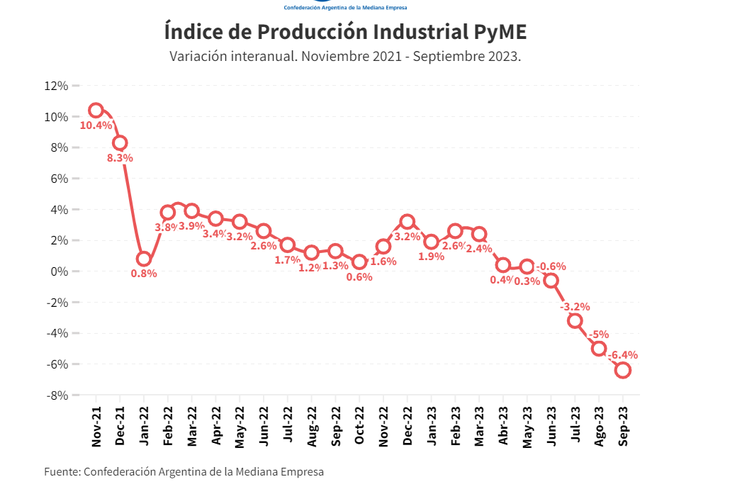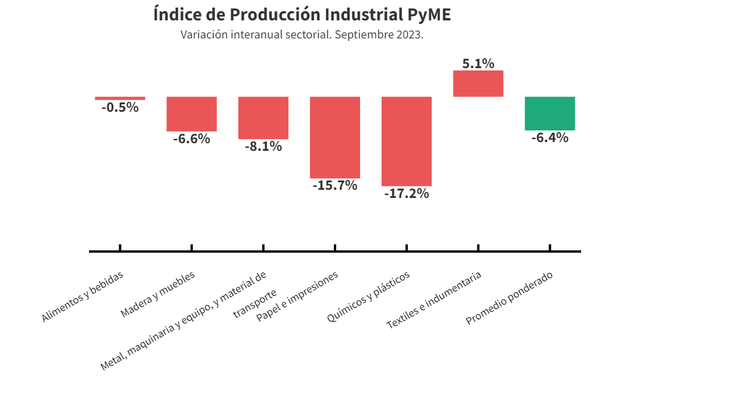During September, companies worked with 73% of their installed capacity, practically the same percentages as August. Political and economic uncertainty put planned investments on hold.
The production of the SME manufacturing industry It fell 6.4% in September compared to the same period last year. It is the fourth consecutive month in which activity has slowed. In total, it accumulates a drop of 0.8% in the first nine months of the year. In the monthly comparison, production remained unchanged.
The content you want to access is exclusive to subscribers.
During September, companies worked with 73% of their installed capacity, practically the same percentages as August. Political and economic uncertainty put in place expect scheduled investmentsand that affected the productive capacity of some factories.


On the other hand, accentuated problems obtaining raw materials and other inputs. The companies surveyed also did not obtain machinery spare parts and had to delay or reduce production scales. The payment chain It was a constant problem: for fear of price spikes, suppliers requested cash and even advance payment to deliver merchandise, conditions that SMEs could not meet.
These results arise from theSME industrial production index (IPIP) prepared by CAME based on a sample that reached 413 SME industries at the federal level.
came1.png

Sectorial analysis
The best performance of the month was “Textile and clothing”, with an annual growth of 5.1% in its production, at constant prices. It was the only sector on the rise. The worst corresponds to the category “Chemicals and plastics”with a drop of 17.2% year-on-year.
In the accumulated year, the best sector performance corresponded to “Food and drinks”, with an increase of 4.2% compared to the January-September 2022 period. The worst occurred in “Paper and prints”, with a collapse of 16.1%.
cam2.png

Source: Ambito




